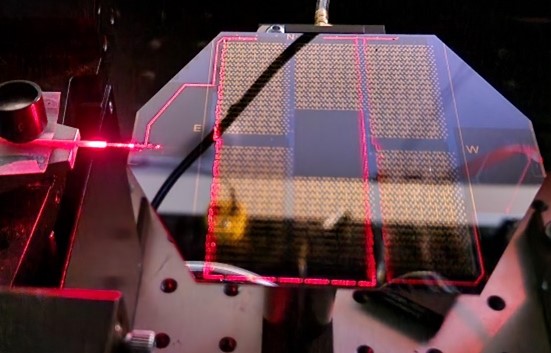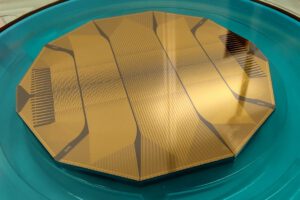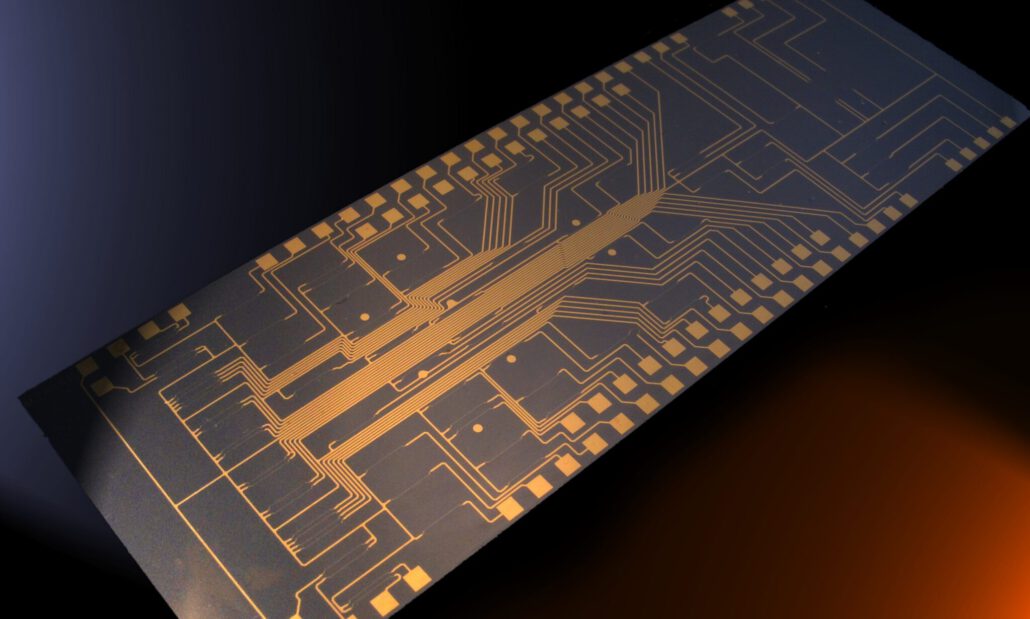Quantum photonics

Our processes ensure that your quantum photonic application sees the light- no matter its complexity!
From quantum photonic processors, to cryostable lasers, integrated laser-electrode ion traps, optical atomic coupling controllers, and more! The use of photonic integrated circuits in quantum photonics allows for low loss, accurate, and stable light generation and control.
Our TriPleX® silicon nitride chips have been instrumental in the breakthroughs of our industrial and academic partners. Whether interested in testing new ideas on a few photonic chips, or in full-system co-design with light simulation, photonic integrated circuit fabrication, and companion electronics, LioniX International has you covered.
Early stage quantum photonic development?For fast turnaround proof of concept trials and prototyping with standard integrated photonic components, a cost effective MPW run is the ideal solution. We give you the tools to design your own circuit, and we make it for you. |
Quantum photonic device scaling?If you want to take your device to the next level, you will want to tailor every aspect of it. From its optical functions, to its electronics, to how it is assembled and packaged. We can support you with the full range of our vertically integrated device development. |
Record-setting programmable quantum photonic processors with TriPleX® silicon nitride chips

The world’s largest quantum photonic processor integrated on TriPleX® by LioniX International.
QuiX Quantum is LioniX International’s quantum computing partner. Our silicon nitride waveguide platform enabled them to hold the record for the world’s largest programmable integrated quantum photonic processors. TriPleX® waveguides ensure 98% transformation fidelity across 20 different input/outputs, with 50-mode processors to be released soon. Our integrated thermo-optic phase tuners ensure very high coherence lengths on these devices.
Our vertically integrated offer enables our customers to have a fully integrated solution, including driver electronics, cooling, and housing. This enabled QuiX to offer its processor as turnkey solution, with ready operability right out of the box.
Narrow linewidth tunable lasers for quantum photonics
For quantum sensing, communications, system control/read-out and high precision optical applications, LioniX International develops and manufactures ultra-narrow linewidth tunable lasers in different wavelength ranges including C-band, 850nm, 780nm and 680nm. The lasers have been tested at cryogenic temperatures, with impressive results!
Integrated ion traps for scalable quantum computing
Drawing on our precision manufacturing capabilities, custom design and fabrication, and the high levels of integration achievable with photonic integrated circuits (PICs), we fabricated chip-based multi-ion traps for quantum processing rivalling the most sophisticated experiments. The versatility of the device allowed its use in atomic coupling control via standing wave interference patterns. Our microring resonators were even used to generate light with pure circular polarization!


